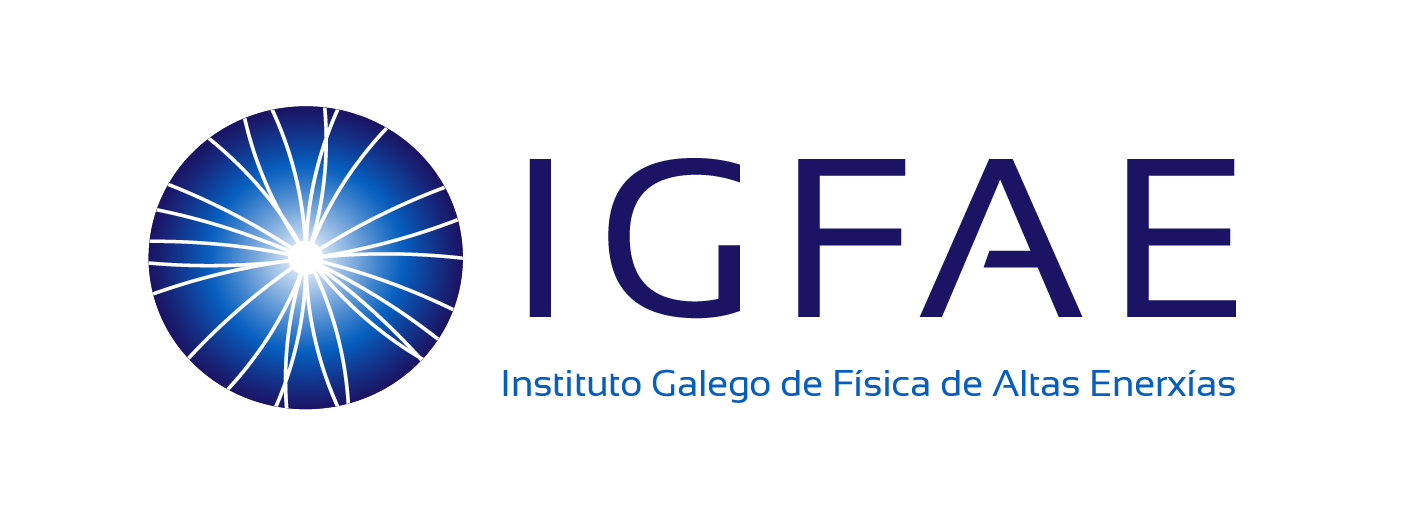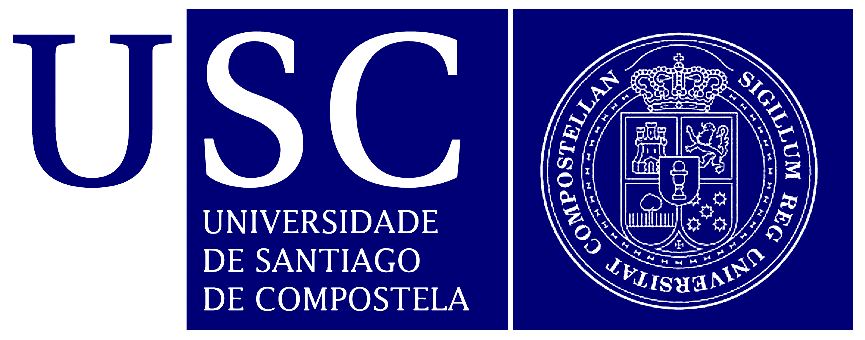Iberian Strings 2020
Santiago de Compostela
Iberian Strings 2020 is the eleventh annual meeting of the Spanish and Portuguese String Theory community, where recent developments in the field of supergravity, strings, branes and gauge theory are discussed. String theorists from outside the Iberian Peninsula are welcome to participate in the meeting.
 |
Welcome to Santiago de Compostela - home of the Instituto Galego de Física de Altas Enerxías of the Universidade de Santiago de Compostela! |
Previous Iberian Strings Meetings were held in Barcelona (2019), Granada (2018), Lisbon (2017), Madrid (2016), Salamanca (2015), Palencia (2014), Lisbon (2013), Bilbao (2012), Valencia (2011) and Oporto (2010 / Archive).
This conference series followed the "Workshop on Gravitational Aspects of Strings and Branes" and the "Northwest Strings" that Iberian String theorists had been organizing since the early 2000s.
In this edition we will have invited lectures by:
- Elias Kiritsis (Crete U., APC Paris)
- Irene Valenzuela (Harvard U.)
- Joao Penedones (EPF Lausanne)
- José F. Barbón (IFT Madrid)
In addition, there will be contributed talks by participants.
Scientific Committee
- Patrick Meessen (U. Oviedo)
- Bert Janssen (U. Granada)
- Esperanza López Manzanares (IFT-Madrid)
- Miguel Costa (Porto U.)
- María Lledó (U. Valencia)
- Igor Bandos (UPC-EHU Bilbao)
- Roberto Emparan (U. Barcelona)
- Fernando Marchesano (IFT-Madrid)
Local Organising Committee
- José D. Edelstein
- Alfonso V. Ramallo
- Jose Luis Miramontes
- Riccardo Borsato
- Maximilian Attems
- Javier Mas
Chairs
Enrique Álvarez, Daniel Areán, Maximilian Attems, Igor Bandos, Paolo Benincasa, José Edelstein, Iva Lovrekovic, Javier Mas, Luis Miramontes, Alfonso Ramallo, Tomás Ortín
Support
Unit of Excellence "María de Maeztu" of IGFAE (Galician Institute of High Energy Physics)


-
-
1
Registration
-
2
Welcome
-
Plenary
-
3
Bootstrapping Quantum Field Theories
I will review the recent revival of the S-matrix Bootstrap approach to QFT. I will also present a new method that relies on unitarity formulated as positive semi-definiteness of the matrix of inner products between asymptotic states (in and out) and states created by the action of local operators on the vacuum. The corresponding matrix elements involve scattering amplitudes, form factors and spectral densities of local operators. We test this method in two-dimensional QFTs by setting up a linear optimization problem that gives a lower bound on the central charge of the UV CFT associated to a QFT with a given mass spectrum of stable particles (and couplings between them).
Speaker: João Penedones (EPFL)
-
3
-
Talk
-
4
Radiation at strong couplingSpeaker: Bartomeu Fiol (University of Barcelona)
-
4
-
10:30
Café
-
Talk
- 5
-
6
Lorentzian CFT correlators in momentum spaceSpeaker: Dr Teresa Bautista Solans (AIE)
- 7
- 8
-
Plenary
-
9
The Swampland program in String Theory
In this talk I will review the most important Swampland Conjectures and their string theoretical motivation. This includes the Weak Gravity and the Distance Conjectures among others. I will discuss the evidence that we have gathered in the past in support of these conjectures, as well as recent developments based on the asymptotic structure of moduli spaces of string compactifications. I will also comment on the phenomenological implications and the relation between the different conjectures.
Speaker: Irene Valenzuela
-
9
-
16:30
Café
-
short talk
-
11
Universal properties of Kaluza-Klein gravitons
Vacua of different gaugings of $D = 4$ $\mathcal{N} = 8$ supergravity that preserve the same supersymmetries and bosonic symmetry tend to exhibit the same universal mass spectrum within their respective supergravities. For AdS${}_4$ vacua in gauged supergravities that arise upon consistent truncation of string/M-theory, we will show in this talk that this universality is lost at higher Kaluza-Klein levels, but still present in a milder form, as certain sums over a finite number of states remain universal. Further, we propose an SL(8)-covariant mass matrix for Kaluza-Klein gravitons which is valid for all the AdS${}_4$ vacua considered and resembles those for the supergravity fields at level zero. The universality of mass sums is related to the trace of this mass matrix.
Speaker: Mr Gabriel Larios (IFT UAM-CSIC and Universidad Autónoma de Madrid) -
12
Twisted N=1 SCFTs and their AdS3 duals
We study compactifications of an infinite family of four-dimensional N=1 SCFTs on a Riemann surface in the presence of arbitrary background fluxes of global symmetries. The four-dimensional parent theories have holographic Sasaki--Einstein duals in type IIB string theory. Central charges and R-charges of baryonic operators in the resulting two-dimensional N=(0,2) theories are computed in three distinct ways: from the field theory side utilizing the c-extremization principle, its recently discovered geometric dual formulation, and holographically using new AdS3 duals of two-dimensional field theories.
Speaker: Huibert Het Lam -
13
Non-perturbative Mellin Amplitudes
We argue that nonperturbative CFT correlation functions admit Mellin amplitude representation. Perturbative Mellin representation readily follows. We derive main properties of nonperturbative CFT Mellin amplitudes: analyticity, unitarity and polynomial boundedness at infinity. We consider dispersion relations for Mellin amplitudes and use them to derive bootstrap bounds and constrain AdS effective actions. We analyze the bootstrap bounds in the case of the 3d Ising model. Mellin amplitudes are particularly simple for large N CFTs and 2D rational CFTs. We discuss these special cases to illustrate general ideas on concrete examples.
Speaker: Joao Pedro Alves Da Silva (EPFL - EPF Lausanne) -
14
Instanton Corrections and Emergent Strings
We study limits of infinite distance in the moduli space of 4d N = 2 string compact- ifications, in which instanton effects dominate. We first consider trajectories in the hypermultiplet moduli space of type IIB Calabi-Yau compactifications. We observe a correspondence between towers of D-brane instantons and D-brane 4d strings, such that the lighter the string the more relevant the instanton effects are. The dominant instantons modify the classical trajectory such that the lightest D-brane string is boosted to a tensionless regime, while the other strings are prevented to go below the fundamental string tension. This tensionless string is dual to a weakly-coupled fundamental type IIB string, and realises the Emergent String Conjecture in this setup. We also consider the vector multiplet moduli space of type I string theory on K3×T2. We find that quantum corrections may turn a decompactification limit to an emergent string limit, consistently with existing results in dual setups.
Speaker: Max Wiesner (IFT UAM-CSIC) -
15
Discrete symmetries in dimer diagrams
Following the paper called Discrete Symmetries in Dimer Diagrams ( https://arxiv.org/abs/1907.06938 ), we apply dimer diagram techniques to uncover discrete global symmetries in the fields theories on D3-branes at singularities given by general orbifolds of general toric Calabi-Yau threefold singularities. The discrete symmetries are discrete Heisenberg groups, with two generators A,B with commutation AB=BAC, with C a central element. These generators depend on the abelian orbifold. This fully generalizes observations in particular orbifolds of the flat space, the conifold and other toric Sasaki-Einstein manifolds. The generator A is realized as a shift in the dimer diagram, associated to the orbifold quantum symmetry; the action of B is determined by equations describing a 1-form in the dimer graph in the unit cell of the parent theory with twisted boundary conditions; finally, C is an element of the (mesonic and baryonic) non-anomalous U(1) symmetries, determined by geometric identities involving the elements of the dimer graph of the parent theory. These discrete global symmetries of the quiver gauge theories are holographically dual to discrete gauge symmetries from torsion cycles in the horizon. Our findings allow to easily construct the discrete symmetries for infinite classes of orbifolds.
Speaker: Mr Alessandro Mininno (Instituto de Física Teórica UAM-CSIC) -
16
Momentum/Complexity Duality and the Black Hole Interior
Notions of operator complexity characterize how fast information scrambles in a many body quantum system. For holographic systems, it has recently been conjectured that the 'size' of an operator can be interpreted in terms of the mechanical momentum of an effective particle in the bulk. In this talk, I will first introduce a different notion of operator complexity for holographic systems by using the VC prescription. I will then show that an exact formulation of the momentum/complexity duality holds for the particular case of spherical thin shell operators. In this picture, the late time linear growth of the operator complexity is due to an exponential time freeze in the black hole interior. I will comment on the precise duality, and on possible generalizations.
Speaker: Martin Sasieta (IFT UAM-CSIC)
-
11
-
1
-
-
Talk
-
18
Real-Time Dynamics of Plasma Balls in a Confining Background
Plasma balls are dropplets of deconfined plasma surrounded by a confining vacuum. We present the first holographic simulation of their real-time dynamics via the dynamics of localised, finite-energy black holes in the AdS soliton background. We consider horizonless initial data sourced by a massless scalar field. Upon time evolution, prompt scalar field collapse produces an excited black hole that eventually settles down to equilibrium at the bottom of the AdS soliton. The radiation emitted in the process can be described as a superposition of the gapped and discrete set of asymptotic states of the confining phase. We discuss the applicability of hydrodynamics to describe the evolution of the system.
Speaker: David Mateos (ICREA & U. Barcelona)
-
18
-
10:30
Café
-
Talk
- 19
- 20
- 21
-
short talk
-
22
T-duality equivalences beyond string theory
The leading order low-energy effective action of string theory is symmetric under T-duality transformations, and although these are such that geometric properties of solutions may change substantially, they still preserve the Hawking temperature and entropy of black holes. The question naturally arises whether this fact holds when one includes higher-order corrections. In this work we present a two-parameter family of actions which contains the alpha prime corrected actions of string theories for some values of the parameters and derive the corrected T-duality rules. Then we show that temperature and entropy of solutions with black hole horizons are preserved under the corrected rules, and this is so even for values of the parameters which do not correspond to effective string theory actions, indicating that T-duality might also provide physical equivalences in cases which do not have a known sigma model.
Speaker: Alejandro Vilar López (University of Santiago de Compostela) -
23
Extremal Rotating Black Holes in Einsteinian Cubic Gravity
New solutions of Einsteinian cubic gravity coupled to a Maxwell field that describe the near-horizon geometry of charged and rotating black holes are presented. We show that the AdS$_2\times\mathbb{S}^2$ near-horizon geometry of Reissner-Nordstr\"om black holes receives no corrections, but deviations with respect to the extremal Kerr-Newman solution appear as we turn on the angular momentum. We provide analytic slowly-spinning approximations, as well as numeric solutions for these corrected geometries, but we also find additional solutions that do not reduce to AdS$_2\times\mathbb{S}^2$ geometries in any limit and that do not have a counterpart in Einstein gravity. Remarkably, we are able to obtain closed-form exact expressions for the area and Wald's entropy of all of these black holes. To the best of our knowledge, this is the first time the entropy of a rotating black hole in higher-order gravity has been exactly computed. Using this result, we analyze the phase space of extremal back holes, which turns out to be considerably more involved than the situation in Einstein gravity.
Speaker: David Pereñíguez Rodríguez
-
22
-
Talk
- 24
- 25
-
26
Complexity measures in QFT and constrained geometric actions.Speaker: Dr Pablo Bueno (Centro Atómico Bariloche)
-
16:30
Café
-
short talk
-
28
The many paths across a phase transition
We use holography to study the complete set of inhomogenous static solutions of a four-dimensional gauge theory with a first order thermal phase transition. We numerically solve Einstein’s equations using both static and dynamical methods, finding perfect agreement between the results. We analyze their thermodynamic properties and study their local stability, finding unstable solutions. For these solutions, we perform the time evolution and determine the endpoint of the dynamical evolution. As the size of the box is increased, we find solutions that tend to a phase separated configuration in which the high and low energy phases coexist at the critical temperature.
Speaker: Mikel Sánchez Garitaonandia (Universitat de Barcelona) -
29
" Supersymmetry Breaking Warped Throats and the Weak Gravity Conjecture
The proposal for a new Swampland conjecture forbidding stable non-supersymmetric "locally AdS" warped throats, which generalizes the Swampland criterion forbidding stable non-supersymmetric AdS vacua, is discussed. The conjecture is motivated by the properties of systems of fractional D3-branes at singularities, and can be used to rule out large classes of warped throats with supersymmetry breaking ingredients, and their possible application to de Sitter uplift. In particular, this allows to reinterpret the runaway instabilities of the gravity dual of fractional branes in the dP1 theory, and to rule out warped throats with Dynamical Supersymmetry Breaking D-brane sectors at their bottom. Another example are warped throats with supersymmetry broken by the introduction of anti-orientifold planes. These examples lead to novel decay mechanisms in explicit non-supersymmetric examples of locally AdS warped throats, and also of pure AdS backgrounds. Based on arXiv:1810.07673
Speaker: Ginevra Buratti (Instituto de Fisica Teorica (IFT) UAM-CSIC) -
30
Shape Dependence of Renormalized Holographic Entanglement Entropy
We show some results concerning the holographic entanglement entropy of deformed entangling regions in three-dimensional CFTs dual to Einstein-AdS gravity, using the extrinsic counterterms renormalization scheme. In this prescription, valid for arbitrary dimension, entanglement entropy is given by the sum of a topological term and a geometrical part that explicitly describes the deformation of the entangling surface. Then, we will discuss the relation of the geometrical part to the Willmore energy, stressing on the link between the strong subadditivity property and the AdS curvature.
Speaker: Javier Moreno (Pontificia Universidad Católica de Valparaíso) -
31
From COST to GenHET: Initiatives in gender in HET
talk + open discussion
Speaker: Yolanda Lozano
-
28
-
20:30
Conference Dinner
-
-
Plenary
-
32
Operator Complexity beyond Scrambling
I review aspects of quantum complexity and its holographic counterpart, applied to operator growth in chaotic systems. At time scales longer than the scrambling time, the size of the operator ceases to be a good characterization of its complexity growth. I will show that a new notion of operator complexity, called Krylov-complexity, satisfies the expected linear growth at long times as a result of the ETH hypothesis in chaotic systems. Second, a holographic understanding of this linear growth follows in a holographic setting from the properties of extremal-volume surfaces in the interior of a black hole.
Speaker: Jose Fernandez Barbon (Unknown)
-
32
-
10:30
café
-
Talk
-
34
Homotopy transfer of L_infinity algebrasSpeaker: Victor Lekeu (Imperial College London)
-
35
Alpha' corrections of Reissner-Nordstrom black holesSpeaker: Pablo Antonio Cano Molina-Niñirola
- 36
-
34
-
short talk
-
37
All higher-curvature gravities as Generalized quasi-topological gravities
Generalized quasi-topological gravities (GQTGs) are higher-curvature extensions of Einstein gravity characterized by the existence of non-hairy generalizations of the Schwarzschild black hole which satisfy g_{tt} g_{rr} = −1, as well as for having second-order linearized equations around maximally symmetric backgrounds. In this talk I will provide strong evidence that any gravitational effective action involving higher-curvature corrections is equivalent, via metric redefinitions, to some GQTG. This suggests that the physics of generic higher-curvature gravity black holes is captured by their GQTG counterparts, dramatically easier to characterize and universal. The talk is based in the preprint https://arxiv.org/abs/1906.00987 (already accepted in JHEP).
Speaker: Angel Murcia (Instituto de Física Teórica) -
38
Leading higher-derivative corrections to the Kerr geometry
I will talk about a recent paper JHEP 1905 (2019) 189, where we compute the most general leading-order correction to the Kerr solution when the Einstein-Hilbert action is supplemented with higher-derivative terms, including the possibility of dynamical couplings controlled by scalars. The model we present depends on five parameters and it contains, as particular cases, Einstein-dilaton-Gauss-Bonnet gravity, dynamical Chern-Simons gravity and the effective action coming from Heterotic Superstring theory. We study several properties of the corrected black holes, such as geometry of the horizon, ergosphere, light rings and scalar hair.
Speaker: Alejandro Ruipérez Vicente (Instituto de Física Teórica UAM/CSIC)
-
37
-
Talk
- 39
-
40
Holographic Collisions and the QCD Critical PointSpeaker: Yago Bea (Queen Mary University of London)
- 41
-
16:30
café
-